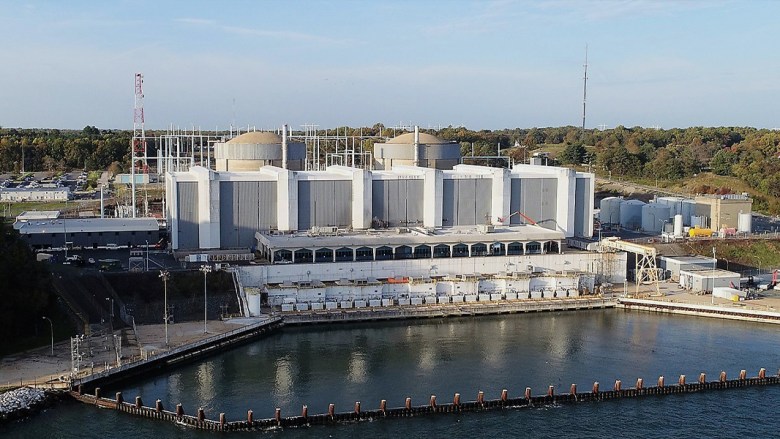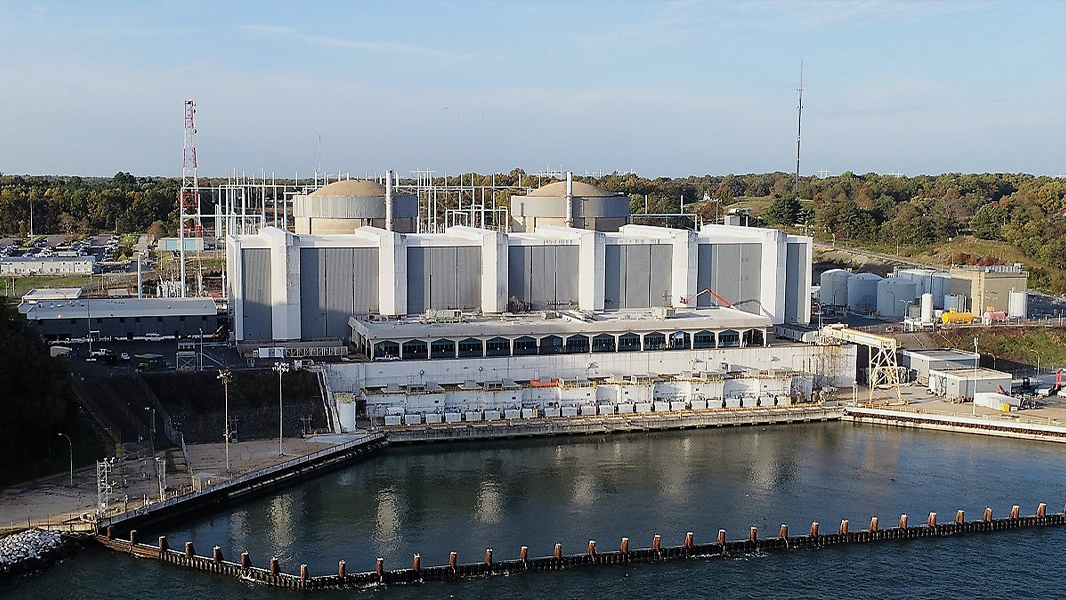 Photo Credit: Constellation Energy Website
Photo Credit: Constellation Energy Website
LUSBY, Md. — The push to expand Maryland’s data center industry has sparked a fervent debate centered on the Calvert Cliffs nuclear power plant. Constellation Energy, the plant’s owner, envisions a future where energy-intensive data centers bypass the traditional electric grid and plug directly into its two-reactor facility in Calvert County. Advocates hail the potential for economic growth, but utilities, environmentalists, and policymakers remain divided over the implications for consumers, the environment, and the state’s energy policy.
Constellation argues that co-locating data centers at power plants is a win-win. “Data centers require large sources of reliable, carbon-free power,” said Mason Emnett, Constellation’s senior vice president of public policy. “Nuclear facilities like Calvert Cliffs are ideally positioned to meet that demand while reducing strain on the electric grid.” The company also contends that bypassing the grid could lower costs for Maryland consumers, as co-located data centers would fund their own delivery systems instead of relying on expensive transmission upgrades.
The stakes are high. As demand for artificial intelligence and cloud computing surges, data center operators are racing to secure land and power sources. States are competing for billions in investment, with Maryland aiming to challenge Virginia’s dominance as the East Coast’s data center hub. Gov. Wes Moore has championed data centers as a cornerstone of his economic strategy, streamlining the approval process and pledging to make Maryland a leader in tech infrastructure.
Maryland isn’t alone in pursuing such initiatives. Earlier this year, Constellation announced a groundbreaking agreement with Microsoft to reopen the dormant Three Mile Island nuclear power plant in Pennsylvania. Under a 20-year deal, the restarted Unit 1 reactor will power Microsoft’s data centers, providing a blueprint for how nuclear energy can meet the immense electricity demands of the tech sector. The plant, renamed the Crane Clean Energy Center, is expected to resume operations by 2028 pending regulatory approvals. This partnership follows a broader trend among tech giants like Meta, which recently sought nuclear power developers for its AI and sustainability goals.
Constellation sees similar potential at Calvert Cliffs, arguing that co-located data centers reduce strain on the power grid, lower costs, and provide a reliable, carbon-free energy source. But the proposal has faced stiff opposition from utilities like Baltimore Gas and Electric (BGE). While utilities acknowledge that co-location can make “commercial and technical sense,” they warn that without proper regulatory oversight, such arrangements could burden ratepayers and threaten grid reliability. “Every co-located load configuration must be studied to protect system reliability,” BGE stated in a filing with the Maryland Public Service Commission (PSC).
The debate has also drawn scrutiny from environmental advocates, who see the expansion of nuclear power as a double-edged sword. While nuclear energy produces no direct greenhouse gas emissions, critics highlight the risks of radioactive waste, potential safety lapses, and the long-term costs of waste storage. The Sierra Club and other groups have opposed plans to expand Calvert Cliffs, citing past safety violations and concerns about the plant’s proximity to densely populated areas like Washington, D.C.
For Calvert County, however, the stakes are economic. County officials have expressed strong support for a large-scale data center project, calling it “transformative.” In a letter to the PSC, the county’s Board of Commissioners argued that co-located data centers would generate tens of millions of dollars in tax revenue and create hundreds of jobs. “Eliminating options for developers ultimately threatens our businesses, schools, and families,” the commissioners wrote.
The PSC is expected to weigh in soon. Lawmakers tasked the commission with studying the impacts of co-location and making recommendations to the General Assembly by December 15. The commission’s decision could set a precedent for how Maryland balances technological innovation, environmental stewardship, and energy equity.
As the PSC’s deadline approaches, the debate at Calvert Cliffs reflects a broader reckoning over how states approach energy and innovation. Whether Maryland follows Pennsylvania’s example at Three Mile Island or forges its own path, the outcome will shape the future of the state’s economy and its role in the rapidly evolving tech landscape.
Contact our news desk at news@thebaynet.com
Related
